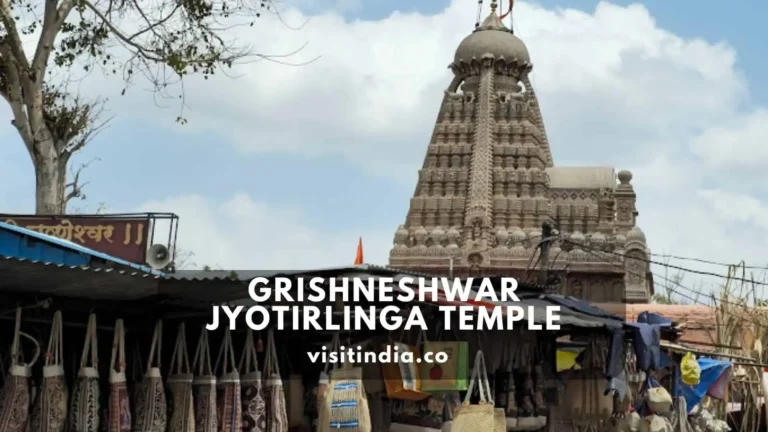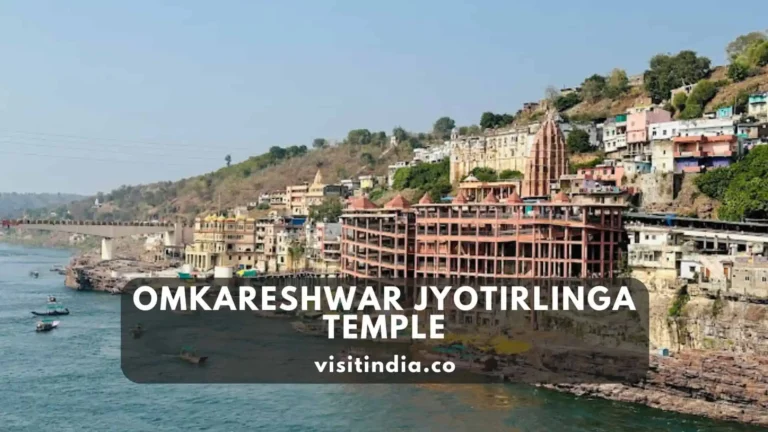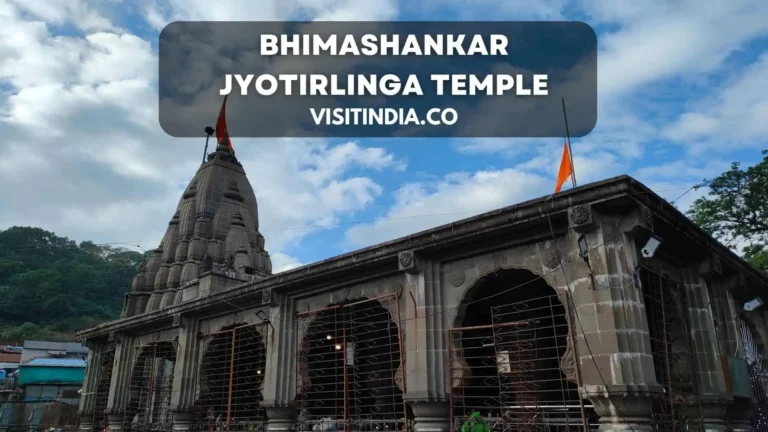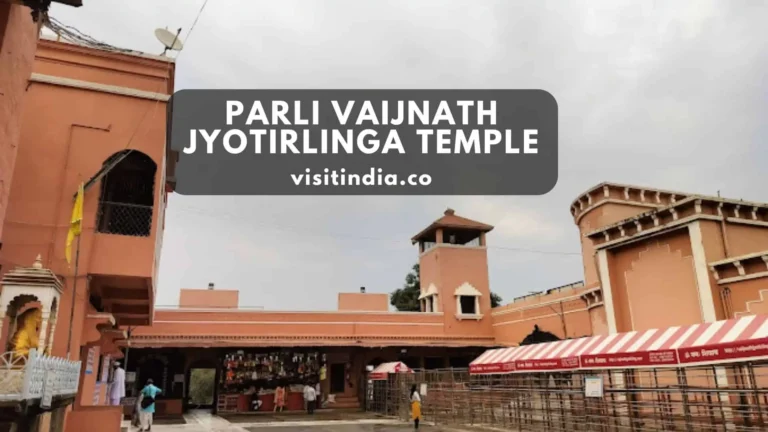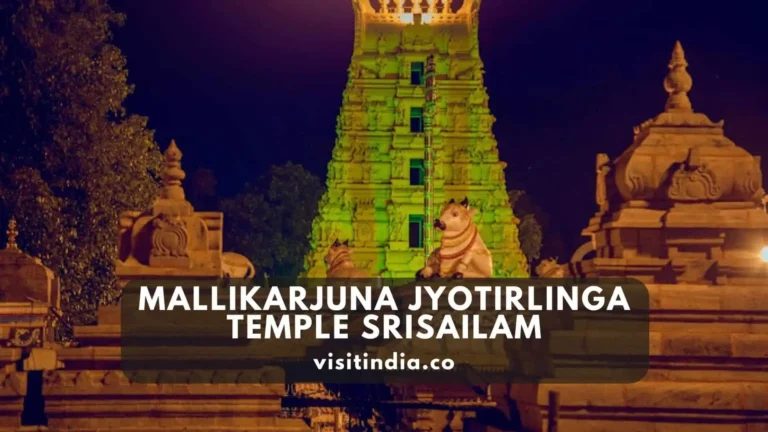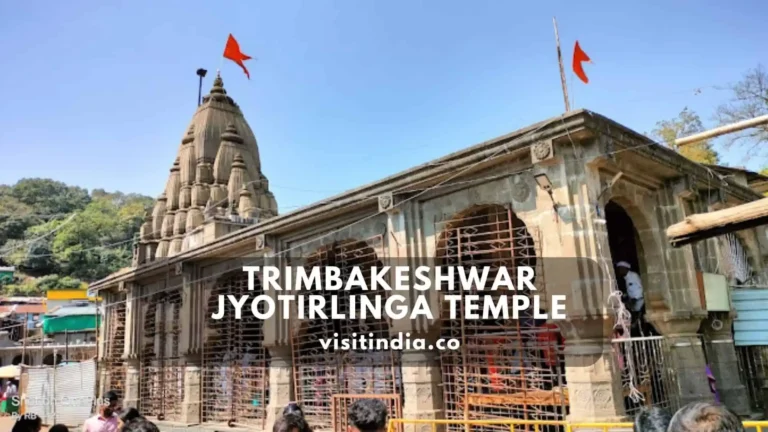Rameshwaram Jyotirlinga Temple (Ramanathaswamy) Timings, Entry Fees, History, Rituals, and Festivals
Welcome to the sacred land of Rameshwaram Jyotirlinga temple, where divinity and spirituality blend seamlessly. Nestled on a conch-shaped island in the Bay of Bengal, this ancient temple holds a significant place in Hindu mythology. As we embark on this mystical journey, we will follow in the footsteps of Lord Rama himself, who worshipped Lord Shiva at this very spot.
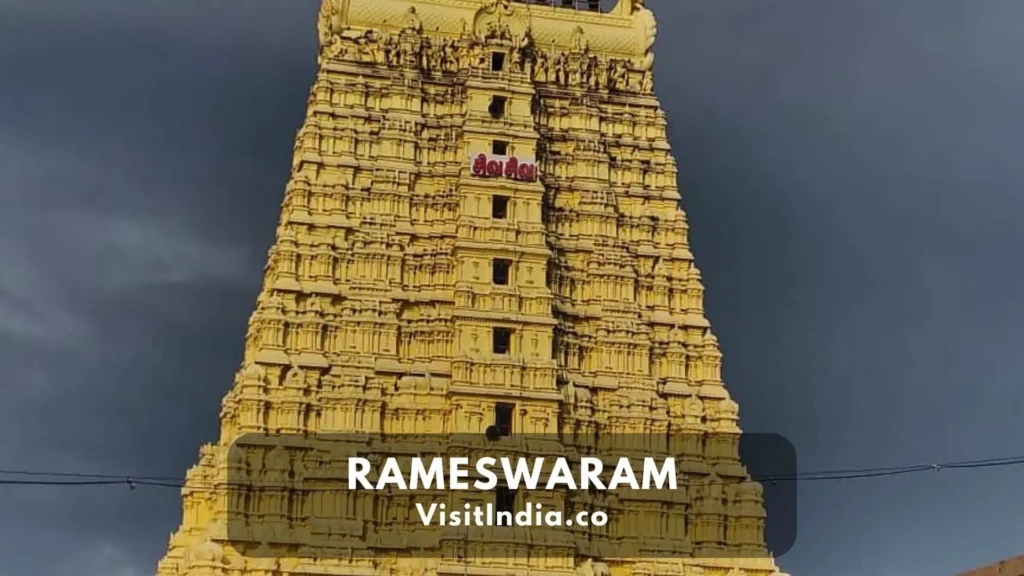
Prepare to be awestruck by the grandeur of the Ramanathaswamy Temple, home to the revered Shri Rameshwaram Jyotirlinga. Not only is it one of the 12 Jyotirlinga temples dedicated to Lord Shiva, but it is also part of the esteemed Char Dham pilgrimage.
Join us on this spiritual odyssey to Rameshwaram Jyotirlinga, where tranquility and divine energy await.
Consider reading: 12 Jyotirlingas in India Name, Location, Significance and Details
Rameshwaram Jyotirlinga Temple (Ramanathaswamy) Timings and Entry Fee
The Rameshwaram Jyotirlinga Temple is a sacred place of worship that attracts devotees from all over the world. If you’re planning a visit to this divine destination, it’s essential to know the temple timings and entry fees to make the most of your spiritual journey.
Ramanathaswamy Temple Timings
The Sri Ramanathaswamy Temple in Rameshwaram is open daily from 5 am until 1 pm. After a brief closure, it reopens in the evening from 3 pm to 9 pm. During these hours, devotees have the opportunity to experience the sanctity and tranquility of the temple, offering their prayers and seeking blessings from Lord Shiva.
Ramanathaswamy Entry Fee
One of the best things about visiting the Rameshwaram Jyotirlinga Temple is that there is no entry fee. Devotees can enter the temple premises without the burden of a ticket cost, allowing them to immerse themselves fully in the spiritual ambiance and connect with the divine energy that resonates within the temple.
In addition to the general entry, the temple also offers special darshan options for those seeking a more personalized experience. The Ramanathaswamy Temple special darshan ticket is available for Rs. 250 per person. This ticket allows devotees to have a closer and unhurried glimpse of the revered deity, ensuring a more intimate connection during their visit.
It’s important to note that early birds can also avail themselves of the Mani Darshan, which begins as early as 4 am. This sacred darshan, accompanied by the serenity of the early morning hours, offers a unique and peaceful experience for devotees. The Mani Darshan ticket cost is INR 50 per person.
Consider reading: Nageshwar Jyotirlinga Temple Timings, Entry Fees, How to Reach, History, Festivals
How to Reach Rameshwaram Jyotirlinga Temple (Ramanathaswamy)
Rameshwaram Jyotirlinga Temple is a revered place of worship for Hindus and attracts numerous devotees from all over the world. If you are planning to visit this divine temple, here are the different ways by which you can reach Rameshwaram:
- By Air: The nearest airport to Rameshwaram is Madurai Airport, which is well-connected to major cities in India. Upon your arrival at Madurai airport, you can hire a taxi or take a bus to reach Rameshwaram, which is approximately a 3-hour drive from the airport.
- By Train: Rameshwaram has a railway station, which is well-connected to major cities in India. Trains from cities like Chennai, Madurai, and Coimbatore have regular services to Rameshwaram. Once you reach the Rameshwaram railway station, you can hire a taxi or an auto-rickshaw to reach the temple.
- By Road: Rameshwaram is well-connected by road and can be reached by buses and private taxis. It is located approximately 600 kilometers from Chennai and takes around 10 hours to reach by road. National Highway 44 connects Rameshwaram to major cities in South India.
- Pilgrimage Tour: Another option to visit Rameshwaram Jyotirlinga Temple is by taking a pilgrimage tour. Several tour operators offer customized pilgrimage packages, which include transportation, accommodation, and guided tours to the temple along with other important religious sites in the region. This can be a convenient option if you want a hassle-free and organized trip.
Once you reach Rameshwaram, you can explore the beautiful temple and seek the blessings of Lord Shiva. Don’t forget to immerse yourself in the spiritual atmosphere and participate in the rituals and poojas that take place in the temple.
Consider reading: Trimbakeshwar Jyotirlinga Temple Timings, Entry Fees, History, Significance, How to Reach
History Behind the Rameshwaram Jyotirlinga Temple
The Rameshwaram Jyotirlinga Temple (Ramanathaswamy) holds a rich historical significance and is revered as one of the most important pilgrimage sites in India. Let’s take a closer look at the fascinating history behind this temple:
- Lord Rama’s Penance: The history of the Rameshwaram Jyotirlinga Temple dates back to the time of Lord Rama, an incarnation of Lord Vishnu. According to legends, during his battle against Ravan, Lord Rama inadvertently killed a Brahmin and thereby incurred the sin of Brahminicide. To atone for this sin and seek Lord Shiva’s blessings, Lord Rama decided to build a grand lingam. However, as Lord Hanuman was delayed in bringing a lingam from the Himalayas, Sita, Lord Rama’s wife, built a lingam out of sand.
- Completion of the Temple: The construction of the Rameshwaram Jyotirlinga Temple began in the 12th century by the Pandya and Jaffna kings. However, it took several centuries to complete the temple due to the reign of various rulers. Despite the delay, the rich architectural beauty and spiritual significance of the temple have made it a popular destination for devotees from all over the world.
- The Jyotirlinga of Light: One of the notable features of the Rameshwaram Jyotirlinga Temple is the presence of the Jyotirlinga, which is a representation of Lord Shiva in the form of a pillar of light. This Jyotirlinga is one of the twelve Jyotirlingas in India and is worshipped with utmost devotion by pilgrims. The Rameshwaram Jyotirlinga Temple holds the distinction of being the southernmost Jyotirlinga in India.
- Lord Rama’s Gratitude: The temple is believed to be the place where Lord Rama offered his gratitude to Lord Shiva for his support during the epic battle against Ravan. It is said that Lord Rama performed various rituals and poojas at this sacred site to seek blessings and express his gratitude.
The history of the Rameshwaram Jyotirlinga Temple intertwines mythology, spirituality, and architectural grandeur. It stands today as a testimony to the faith and devotion of millions of devotees who visit this sacred place.
Consider reading: Kedarnath Jyotirlinga Temple Timing, How to Reach, Significance, History
The Significance of the Rameshwaram Jyotirlinga Temple
The Rameshwaram Jyotirlinga Temple holds immense religious and historical significance. Let’s delve deeper into why this temple is considered one of the most important pilgrimage sites in India.
1. Embracing one of the 12 Jyotirlingas:
- The Rameshwaram Jyotirlinga Temple is renowned for being one of the twelve Jyotirlingas, which are considered the most sacred shrines dedicated to Lord Shiva.
- These Jyotirlingas are believed to be the abode of Lord Shiva in the form of a lingam, symbolizing the divine power and presence of the deity.
2. Lord Rama’s gratitude to Lord Shiva:
- According to ancient scriptures, it is believed that Lord Rama, the seventh avatar of Lord Vishnu, visited Rameshwaram after defeating the demon king Ravana in Lanka.
- Lord Rama prayed to Lord Shiva at this very place to seek forgiveness for the sins committed during the war and offer his gratitude for the victory.
- The Lingam of Ramanathaswamy, the presiding deity of the temple, is believed to have been installed by Lord Rama himself.
3. Southernmost Jyotirlinga of India:
- The Rameshwaram Jyotirlinga Temple claims the distinction of being the southernmost Jyotirlinga in India, attracting pilgrims from all corners of the country and beyond.
- Its location on the picturesque Pamban Island adds to its allure, providing devotees with a serene and spiritual ambiance.
- The temple’s construction started in the 12th century and was completed during the reign of various rulers over the centuries.
- The architectural style of the temple reflects a combination of Dravidian and Nayaka influences, showcasing the rich cultural heritage of the region.
- Its intricate carvings, towering gopurams (gateway towers), and sacred water tanks such as Agni Theertham make the temple a visual marvel.
- Rameshwaram is one of the four major tirth yatra sites in Hinduism, along with Puri, Dwarka, and Badrinath.
- Pilgrims consider visiting these
Consider reading: Grishneshwar Jyotirlinga Temple Timings, Entry Fee, How to Reach, History, Facts
Architectural Significance of Rameshwaram Jyotirlinga Temple
The Rameshwaram Jyotirlinga Temple holds great architectural significance, showcasing the excellence of ancient Indian craftsmanship. It is a temple that stands as a testament to the rich cultural heritage of our country. Here are a few key points that highlight the architectural significance of this temple:
- Intricate Works: The Sri Ramanathaswamy Temple is renowned for its intricate architectural designs and carvings. The temple’s majestic towers and corridors are adorned with elaborate sculptures depicting various mythological stories and deities. These intricate works not only reflect the skill and precision of the craftsmen but also provide a visual treat for visitors.
- Corridors and Mandapams: The temple boasts of the longest corridor among all Hindu temples in India, measuring about 1.2 kilometers. This corridor, known as the Rajagopuram Corridor, is lined with beautifully carved pillars, showcasing the architectural brilliance of the time. Besides the corridor, the temple also features numerous mandapams (halls) that are intricately designed and engraved.
- Gopurams (Gateway Towers): The temple has several magnificent gopurams, also known as gateway towers. These towering structures at the entrance of the temple complex are intricately designed and decorated with sculptures of gods, goddesses, and mythical creatures. The gopurams not only serve as grand entrances but also mark the transition between the mundane world and the sacred space of the temple.
- Pillared Halls: The Rameshwaram Jyotirlinga Temple is home to numerous pillared halls, such as the thousand-pillared hall and the 1000 Thiruvathirai mandapam. These halls showcase the architectural expertise of the craftsmen with their intricately carved pillars, each with unique designs. The pillared halls provide a serene space for devotees to offer their prayers and participate in rituals.
- Development over Centuries: The construction of the temple began in the 12th century and continued in phases under the patronage of different rulers. The temple’s architectural style evolved over the centuries, incorporating various influences and showcasing the architectural diversity of different periods.
Consider reading: Kashi Vishwanath Temple Timings, Entry Fees, How to Reach, History, Facts, Significance
Interesting Facts About the Rameshwaram Jyotirlinga Temple (Ramanathaswamy)
The Rameshwaram Jyotirlinga Temple holds great significance in Hindu mythology and is one of the most revered pilgrimage destinations in India. Here are some interesting facts about the temple:
- One of the 12 Jyotirlingas: The Rameshwaram Jyotirlinga is one of the twelve sacred Jyotirlingas in India. These Jyotirlingas are believed to be the most important abodes of Lord Shiva. Each Jyotirlinga is considered a powerful symbol of divine energy and is worshipped with great devotion.
- Char Dham pilgrimage: The Rameshwaram Jyotirlinga Temple is part of the Char Dham pilgrimage, which consists of four holy sites revered by Hindus. These four sites include Rameshwaram (in the south), Badrinath (in the north), Dwarka (in the west), and Puri (in the east). Completing the Char Dham pilgrimage is considered extremely auspicious and spiritually rewarding.
- Architectural marvel: The Ramanathaswamy Jyotirlinga Temple is renowned for its architectural grandeur. It is especially famous for its long corridor, which is the longest among all Hindu temples worldwide. The corridor is adorned with intricately carved pillars that showcase the exquisite craftsmanship of ancient times.
- Significance of the lingam: Unlike other Shiva temples, where a Shiva idol is worshipped, the Rameshwaram Jyotirlinga Temple worships the jyotirlinga, which is a radiant column of light symbolizing Lord Shiva. The Jyotirlinga is considered to be the primary form of Lord Shiva’s divine energy.
- Sacred water tanks: The temple complex houses several sacred water tanks known as tirthas. These tirthas are believed to have healing properties and are considered extremely auspicious. Taking a dip in these tirthas, particularly the 22 tirthas located within the Rameshwaram Temple premises, is considered a purifying and spiritually uplifting experience.
Consider reading: Omkareshwar Jyotirlinga Temple Timings, Parikrama, Distance, Facts, Significance
Rameshwaram Jyotirlinga Temple Festivals
The Rameshwaram Jyotirlinga Temple (Ramanathaswamy) is not only a place of worship, but also a center of festive celebrations. Throughout the year, this temple hosts various festivals that attract devotees from near and far. Let’s take a closer look at some of the festivals celebrated at the Rameshwaram Jyotirlinga Temple:
- Masi Mahashivaratri: This auspicious festival is celebrated with great zeal for ten days, starting from Mahasashti Krishnapatcham Maasi (February/March) to Mahakrishna Amavasai. The highlight of the festival is the grand chariot procession, known as Rishaba Vaahana Dharshan, where devotees pull the chariot with great devotion. The festival also includes the Mahasivarathri Abishekam ceremony, where the lingam is bathed in holy water and adorned with various offerings.
- Mahalaya Amavasai: Dedicated to the pitrs (ancestors), this festival takes place during the waning lunar phase in September/October. Devotees throng to Rameswaram to perform rituals and offerings for their ancestors. Mahalaya Amavasai, also known as Sarvapitri Amavasya or Pitra Moksha Amavasya, holds great significance in Hindu traditions.
- Aadi Thirukalyana: This festival, held around July and August, celebrates the divine marriage of Lord Ramanthaswamy and Goddess Parvathavardhini Ammal. The festival lasts for seventeen days and attracts hundreds of devotees from all over the world. The entire town of Rameshwaram comes alive with processions and cultural festivals during this period.
These festivals showcase the rich cultural heritage and religious fervor associated with the Rameshwaram Jyotirlinga Temple. Devotees not only visit to seek blessings but also to be a part of these vibrant celebrations.
Consider reading: Mallikarjuna Jyotirlinga Temple Srisailam Timings, How to Reach, History, Facts, Nearby Places to Visit
Places to Visit Near Rameshwaram Jyotirlinga Temple
When visiting the Rameshwaram Jyotirlinga Temple, there are several other places nearby that you can explore to enrich your spiritual journey. Here are some of the noteworthy places to visit near the temple:
- Dhanushkodi: Located just a few kilometers away from Rameshwaram, Dhanushkodi is a small town known for its mythological significance and breathtaking views. It is believed to be the place where Lord Rama’s bridge to Lanka was built and is considered sacred by Hindus. The remains of the town, which was destroyed in a cyclone in 1964, add a mystical charm to the place.
- Adam’s Bridge: Also known as Rama Setu, Adam’s Bridge is a chain of limestone shoals that stretches from Rameshwaram to Sri Lanka. According to Hindu mythology, Lord Rama and his army built this bridge to rescue his wife, Sita, from the clutches of the demon king, Ravana. The bridge offers scenic views and is an important pilgrimage site for devotees.
- Kothandaramaswamy Temple: Situated in Dhanushkodi, the Kothandaramaswamy Temple is dedicated to Lord Rama, Sita, Lakshmana, and Hanuman. It is believed to be the exact spot where Lord Rama worshipped Lord Shiva after defeating Ravana. The temple showcases beautiful architecture and paintings depicting scenes from the Ramayana.
- Agni Teertham: Located close to the Rameshwaram Jyotirlinga Temple, Agni Teertham is a sacred bathing spot where devotees believe they can wash away their sins. Taking a dip in the holy waters of Agni Teertham is considered auspicious and is an important ritual for many pilgrims visiting Rameshwaram.
- Rama Tirtham: Situated around 5 kilometers from Rameshwaram, Rama Tirtham is a natural spring surrounded by lush greenery. According to legends, Lord Rama is said to have washed his face here after killing Ravana. The serene surroundings and the freshwater of Rama Tirtham make it a peaceful place to visit.
Final Thoughts on Rameshwaram Jyotirlinga Temple
Visiting the Rameshwaram Jyotirlinga Temple is truly a remarkable experience. The temple not only offers a sacred space for devotees to connect with Lord Shiva but also provides a glimpse into the rich cultural heritage and religious traditions of the region.
With its intricate architecture, the temple stands as a testament to the devotion and craftsmanship of the people who built it. Participating in the rituals and poojas at the temple allows us to immerse ourselves in the spiritual atmosphere and feel a deep sense of peace and tranquility.
The temple is not just a place of worship, but also a hub of festivities. The various festivals celebrated here, such as Masi Mahashivaratri, Mahalaya Amavasai, and Aadi Thirukalyana, bring the temple to life and showcase the vibrant traditions of the community.
Moreover, the surrounding areas offer a multitude of attractions that complement the spiritual journey. From the mystical Dhanushkodi to the serene Rama Tirtham, each place adds its unique charm to the experience.
FAQs on Rameshwaram Jyotirlinga Temple
Is Rameshwaram is one of 12 Jyotirlinga?
Yes, Rameshwaram is indeed home to one of the twelve sacred Jyotirlinga shrines. Specifically, the renowned Ramanathaswamy Temple honors Lord Shiva with this holy Jyotirlinga, making it a central pilgrimage destination for devotees within the pantheon of Hinduism in Tamil Nadu, India.
What is the Speciality of Rameswaram temple?
Rameswaram Temple is renowned for its stunning Dravidian architecture, notably its expansive corridors and intricately carved pillars. The temple features an impressive 38-meter Gopuram (tall tower) and holds spiritual significance as a National Pilgrim Centre, attracting devotees and tourists alike.
Can we touch Rameshwaram Jyotirlinga?
Visitors cannot touch the Rameshwaram Jyotirlinga, as per the temple’s traditions. Access to the inner sanctum, where the sacred Jyotirlinga is placed, is typically restricted to maintain the sanctity of the deity. Devotees can offer prayers and receive blessings from a distance, respecting the temple’s customs.
What is the story of Rameshwaram Jyotirlinga?
The Rameshwaram Jyotirlinga is central to the tale where Lord Rama, after defeating Ravana, seeks expiation by worshipping Shiva. As the story goes, Rama directs Hanuman to fetch the linga from Mount Kailash for the ceremonial puja. This sacred event marks Rameshwaram as a pivotal pilgrimage site in India, attracting numerous devotees.
